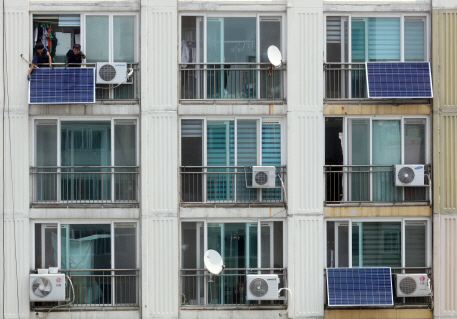Energy self-reliant communities receive warm reception
By Bak Se-hwanPublished : March 5, 2018 - 14:58
In a country where renewable energy accounts for around 1 percent of total electricity generated, the Seoul Metropolitan Government is pushing to increase the number of “energy self-reliant villages” to up to 100 by the end of 2018 to curb reliance on coal and nuclear energy.

Seoul, where more than half of the country’s 50 million population resides, offers opportunities to participate in community-level programs, bolstering renewable energy and supporting local economies, which result in significant cost savings for participants.
With the city’s subsidies, residents in areas designated as energy self-reliant communities will be able to reduce the energy they consume and take part in energy conservation activities.
Over 520 rounds of energy-saving education classes took place in a total of 66 energy self-reliant villages last year, according to the city. People who took part in the campaign engaged in activities such as installing proper sealing for windows and doors, which help houses retain heat.
In addition, more than 1,000 light bulbs were replaced by light-emitting diode lights to reduce electricity consumption.
The city also carried out the Eco Mileage program, which offers incentives to those who save electricity. More than 1,069 households have joined the program so far.
“For the past six years, Seoul has provided support for citizen-driven energy self-reliant villages and activities, and we saw possibilities to expand it,” said Kim Yeon-ji, an official at the energy division of the Seoul city government.
“The villages will be an important stepping stone for the city to build infrastructure and increase energy independence,” Kim added.
The city government started the designation of energy self-reliant neighborhoods in 2012 as part of its energy conservation plan.
Once selected, a neighborhood is provided with subsidies, education and outreach programs for up to three years. The number of such villages was seven in 2012 and 80 at the end of 2017.
A study found that villages in the third year of the support program saved electricity consumption by 15 percent on average. In 2016 alone, they saved power consumption by an average of 7.2 percent through their own energy-saving activities, such as the Energy Festival and “Lights-off Campaign.”
To encourage more involvement and reach a consensus on energy saving, the city said it would continue its financial, administrative, and informational support for energy self-reliant communities.
By Bak Se-hwan (sh@heraldcorp.com)







![[KH Explains] Hyundai's full hybrid edge to pay off amid slow transition to pure EVs](http://res.heraldm.com/phpwas/restmb_idxmake.php?idx=644&simg=/content/image/2024/04/18/20240418050645_0.jpg&u=20240419100350)






![[From the Scene] Monks, Buddhists hail return of remains of Buddhas](http://res.heraldm.com/phpwas/restmb_idxmake.php?idx=652&simg=/content/image/2024/04/19/20240419050617_0.jpg&u=20240419175937)

![[KH Explains] Hyundai's full hybrid edge to pay off amid slow transition to pure EVs](http://res.heraldm.com/phpwas/restmb_idxmake.php?idx=652&simg=/content/image/2024/04/18/20240418050645_0.jpg&u=20240419100350)

![[Today’s K-pop] Illit drops debut single remix](http://res.heraldm.com/phpwas/restmb_idxmake.php?idx=642&simg=/content/image/2024/04/19/20240419050612_0.jpg&u=)